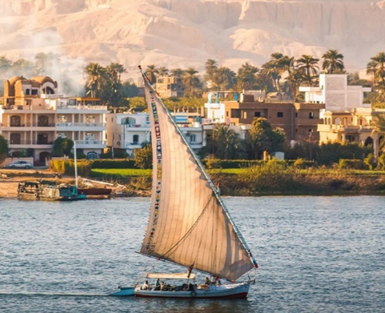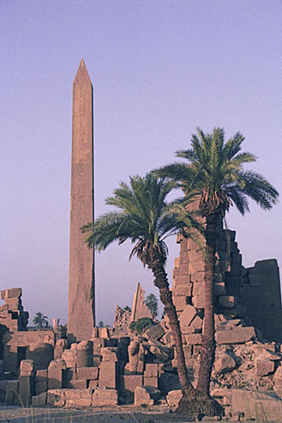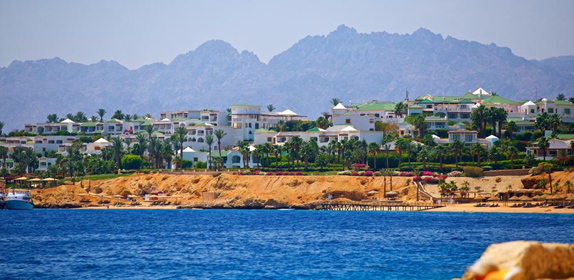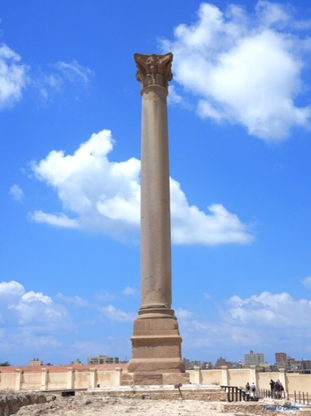—Mature or Not?
I think that the very fact you asked this question shows that you have some level of emotional maturity. A hallmark of emotional maturity, after all, is being honest with yourself and asking yourself hard questions. Emotional maturity takes being introspective about your feelings and how and why you react as you do.
I don’t claim to be emotionally or relationally mature. I know I have a lot of growth to do in those areas. I’m not exactly sure what emotional maturity is supposed to look like. I know that the correct definitions say things down the line of being able to restrain your emotions and reacting in a way appropriate to the situation rather than blowing things out of proportion, but I get really confused about these things that leave some wiggle room.
Because here’s the deal: Having emotions is OK. Expressing them in a healthy way is good. Emotions won’t always be fun and even expressing them in a healthy way will not always feel good in the moment. So I get stuck trying to figure out the balance between healthy expression and proper restraint. You can tell already I’ll be no help in answering this question.
If you think emotional maturity means that you will never feel something out of proportion, I don’t think that is right. I believe that emotional maturity is more about how you deal with those big feelings when they well up. It’s more about taking a moment to make a conscious choice. It’s about learning to face your hurt feelings and then intentionally giving them to God.
In general, maturity is something gained through time and life experience. It’s learning from past mistakes and allowing growth to take place. Maturing is probably more of a process than an end point. Don’t quit trying to grow and mature, but don’t be too hard on yourself if you think it’s not happening fast enough. As long as you have a desire to grow and a willingness to deny self, you’re probably about at the spot where you’re supposed to be.
As you pointed out in another message you sent me, ourselves are the only people we have any power to change. That is another understanding that comes with maturity, learning to step away from any mentality of being powerless and step toward giving other people grace.
No, it’s not easy. There will still be days you fail to get your feelings about relationships under control. Don’t be surprised by them. Taking responsibility for one’s own feelings and actions is a very scary but heroic step to take.
I would encourage you to try digging to the bottom of your big emotions. Often, when I take the time to do this I find that my own insecurities are getting in my way and causing me to overreact. Maybe the interaction has left me feeling dumb which means the other person might not like me. Maybe it hits a nerve of fear that I’ll never be good enough to measure up to those around me. Maybe it left me feeling unlovable.
All those things cause us to react to someone in a way that seems out of proportion to the interaction. On the surface, the exchange may look like where to stack clean towels or how to make a pitcher of tea and the other person is left startled and dismayed by our reaction to their comment.
All this is to say that I think God is interested in our emotional maturity. Relationships are important to Him and He wants to help us grow. If we are connected with our Father, He will help us mature throughout our lives in our connections with others.
—Reading Specialist
Dear Reading Specialist,
The most simple and straightforward answer is “I don’t know.” In fact, I don’t know real answers to any of your questions.
I do think more education about education could be very helpful. I have a sneaking suspicion that the best course would be lectures given by a skillful public speaker that turned the presentation into something that felt similar to entertainment. We learn more easily if we are entertained in the process, after all, and this is a subject that can easily feel overwhelming and over peoples’ heads.
The last part of your question is the bit that is challenging. It’s very interesting to observe how people react to the idea that their child might need help. Some of them have struggled in school and are desperate for their child to have help so he “never has to go through what I went through!” Other parents who struggled say things like, “I had to tough it out and he can, too; it’s good for him.”
Some people don’t like getting help for their children because they feel like they are labeling them. I know this is a terribly controversial subject and something that people often feel strongly about. This is probably the place I would be wise to be quiet, but I do have a couple thoughts on it. The first is that a label should never limit someone. If you find a label is limiting a person’s capabilities, that label is being used as a crutch rather than an aid. Any type of label should be like a pair of glasses in the way that it helps you find ways to move forward.
My second thought about labels is that if a child is struggling and we don’t label the problem (it’s the problem we’re supposed to label anyway, not the child), the child will often manufacture labels of their own that are far worse, more hurtful, and become core beliefs that can cause life-long effects. Some of the labels they might invent are things like “I’m dumb,” “I’m a failure,” or “I’ll never be good enough.”
For parents who are open-minded or of a logical bent, explaining the mechanics of reading in laymen’s terms would probably be very helpful. For those who are more skeptical it may not make much of a difference. This is not to say one type of parent is superior to the other. We need both types; it’s just a difference.
It is a parent’s privilege to decide if they want to seek help for their child or not. It is their prerogative whether they choose to find a label. I believe it is important to respect parents’ decisions for their children in these areas.
—Reflecting in the Southwest
I had to Google this. I could’ve come up with something to say, of course, but Google has a ready-made list which I can just comment on. Are you sure you’re ready?
One of the first things that is important is being aware of other people’s schedules. In other words, don’t send messages really early or extremely late. For some of us it won’t matter because we keep our phones on silent, but there are those who might be disturbed. Think about this when crossing time zones. (I keep forgetting. It’s not my fault that almost everyone I know lives in central time, is it?)
It’s respectful to reply in a timely fashion. I don’t think this means we have to answer immediately. Some messages take answers that need a little time to marinate, but we shouldn’t leave messages on read for too long without some type of response—even if it’s just saying, “Hey, let me think about that and get back with you.”
In a group chat you should participate in a positive way without dominating the conversation. This one is interesting to me because I know participation in groups (I’m not talking about a group of 500 here, by the way—think a group of eight or ten or even only five) can vary according to personality.
I once taught school with some certain people who almost refused to answer on the group chat, even though there were only three or four of us on it. This made figuring things out a little challenging to say the least. We did have a good relationship, and they were free to share their opinions face to face, but they would hardly say a word on the chat. I fall into the ditch of talking too much if it’s a small chat. On one as large as, say, thirty people, my participation may decrease immensely. My view of this is that we should be willing to share but not be terribly judgmental if someone else’s habits on a chat are different than my own, because there are probably a lot of different circumstances involved as well.
Privacy is a real and precious thing. As a general rule don’t forward messages, images, etc., without asking permission first. Also, be sure your information is accurate before passing it on.
Some people love emojis and stickers while others hate them. Google informs us we need to be cautious of over-use. What that means might be different for different people. I enjoy a good emoji, but there are many times old-fashioned words are even better. Often, girls for sure, will use emojis as a way to try to communicate the right feeling when they’ve typed something out. As in, “I know I made a comment that sounded a little rude, but I still love you.” If we find ourselves overcompensating for our words too many times, we should probably think about revising our messages.
If you must send a fifteen-minute voice message, be prepared for the fact the recipient may never listen to it. Keep voice messages a reasonable length or consider breaking them down into bites that are easier to handle.
I’m not sure if this fits in with just WhatsApp, but in today’s world it is considered respectful to send a message asking if it’s a good time to call. Of course, this only applies to situations where you just want to chat or have a conversation about certain topic. No need to message me first if you see my house is on fire.
Some people believe there is a whole etiquette lesson around leaving group chats. Sources online suggest you should notify an administrator before leaving a group. While that may be applicable in some situations, there are times it’s OK to just leave, too. However, there is such a thing as leaving with bad timing. If I’ve just poured out my heart and asked for support and you choose the next two minutes to leave the group, things probably don’t look too great for our relationship in the future. You’d do better to mute the chat for a couple of days and then leave gracefully.
In our communities, most of us know and trust one another, but it is still advisable to ask permission before passing on someone’s contact information. At the very least notify the party in question that “I gave your number to so-and-so because they needed someone to talk to about making pottery and I thought you’d be a good one.”
These are all things that most of us know instinctually. Respect and the Golden Rule can cover a lot of bases here, too. While it would be nice if everyone used good etiquette or followed rules that I think are appropriate, remember some folks don’t place their napkins in their laps, either, and they are still perfectly pleasant to be around.
—Single and in Want of Social
Dear Single,
If you think I have any good, down-to-earth suggestions here, you are definitely wrong. I’ve moved around enough to know that it can just be straight up complicated.
It does seem that the burden of responsibility often rests on the shoulders of us single girls to find a way to fit in socially. While youth and young marrieds and middle age marrieds sort of have their natural groups, we are a bit of an anomaly. Most of us aren’t lucky enough to live in a place with a ready-made group of singles. I’m not complaining, I’m just saying that’s how it is.
I am absolutely the worst person to be talking about this because it’s terribly hard for me to do, but inviting ourselves over to someone else’s place is probably the first step. I think this is hard because we feel like we might not be really wanted. It may feel like we are intruding and being a burden. But I believe God wants us to fight those feelings, grab His hand, and be a little more vulnerable than what comes naturally.
That being said I would still advise caution against just choosing a family and attaching oneself like a leech. If they invite you, that’s great, but don’t be hurt if they choose to do things without you sometimes, too. This actually gives you a greater blessing in the long run because it allows you to form relationships with two or three different families.
Also, one of the things I like about being an older single girl is that I don’t feel like I have to fit in with my age group. Don’t get me wrong, I love being with other girls—married or not—who are similar to my age, but I also have so much freedom to be friends with people of all age groups. I can sit at the feet of wisdom when I am with the older women and enjoy the enthusiasm of random youth girls as well.
It is important that we learn how to lose sight of ourselves and look for ways we can serve in our congregations. Volunteering and showing up when we can will help us feel like part of the group. It will also help others see us as part of the group. I know this can be challenging at times. For example, we can’t show up at a cleaning day when someone is moving into a new house because we are holding down a job, but we can help set tables or wash dishes at a potluck.
And remember invitations go both ways! Maybe it’s way out of your comfort zone to invite someone over for a meal, but ask them to come after church on Sunday night. We single girls can get really attached to our ideas about our schedules and how we want our lives to run, but if we want a social life we will have to give up some of that predictability and be willing to branch out and be creative.
We can’t afford to sit and feel sorry for ourselves, of that I am certain. I’m amazed how many of the married folks say they don’t do much with other people, either. Some of the young wives are very lonely and don’t feel that they fit in, either. Fitting in might be a little extra challenging for us single girls, but the reality is we aren’t the only ones who find it difficult.
So I wish you a special refuge where you can relax and have your needs for social life met. It may happen in a way or at a place you’ve never thought of.
—From the Bayou State
I can’t believe my luck! What a perfectly brilliant thing to ask me. It just so happens I have dozens of questions in my head at just about any time and I search for the right people to ask and how to slip them into conversations, but often I struggle finding the correct time and place and just get myself into awkward situations. Actually awkward silences might be better put. Without further ado, some of them are as follows:
· Do you have an opinion on rooms painted black?
· I keep getting distracted in church by the beautifully curved trim on the wavy walls of the rostrum. How do they get wood to curve like that? I’m sure all the men out there know the answer, and probably a lot of women, but I don’t, and I’ve refrained from Googling.
· “Fake it ‘til you make it,” they say. What are signs that faking it has turned into the real thing? I’m thinking in areas like confidence and learning to have a conversation.
· If you are driving uphill with a ten-pound weight (not fastened down) on a smooth surface of your vehicle, what is the fastest speed you can be traveling for the weight to not move at all when you hit the brakes? I’m sure the grade of the hill and who knows what all makes a difference, but I was thinking about this the other day and I’d love somebody to throw some numbers at me. I’d be curious about all the variables and experimenting with different weights, too.
· What is a book, poem, or song that you have come across that feels like a hidden treasure because it is not well-known, but you think it’s amazing?
· What is your opinion on humanoid robots created to be healthcare workers, teachers, etc.? Do you think they have a place in the future? Would you be intrigued or creeped out by having a robot nurse?
· Do you have family traditions at Christmas, Thanksgiving, Easter, or any other time? What are they?
· Is it possible or important to teach our children and youth to dress in a way that is flattering to them rather than just following the styles? Not every style looks good on every person, but everyone does want to fit in, and that might not be all bad, either.
· What are some dreams that have come true for you besides marriage and/or children?
· If you had to choose something you enjoy to go a year without, what would it be?
· What is your favorite non-harmful prank you have ever observed or been part of?
· What is it that you love about the colors you have an affinity for?
· What are some ways God has led your life?
· What is the last compliment you gave someone?
· If we put giant QR codes on the back of semi-trailers that led to random jokes or funny advertisements, do you think they would be considered a safety hazard and have laws made against them?
· Why do people in our communities believe in torturing newlyweds? It’s possible for the vehicle to have things done to it at the send-off, the house might get decorated while the couple is gone on the honeymoon, and more so-called pranks might get pulled during the pancaking ritual. Pancaking seems to have things in common with an old-fashioned shivaree, but even so, that was a one-time deal, not three chances for destruction.
· How do you make friends after you get out of the youth? Everyone is so busy with their own lives and families it can seem challenging. (OK, I admit it, I stole this one from a conversation I had with a friend who talked about struggling to make friends after she married and moved into a new congregation, but it’s still a good question, and I’m curious what others think.)






















